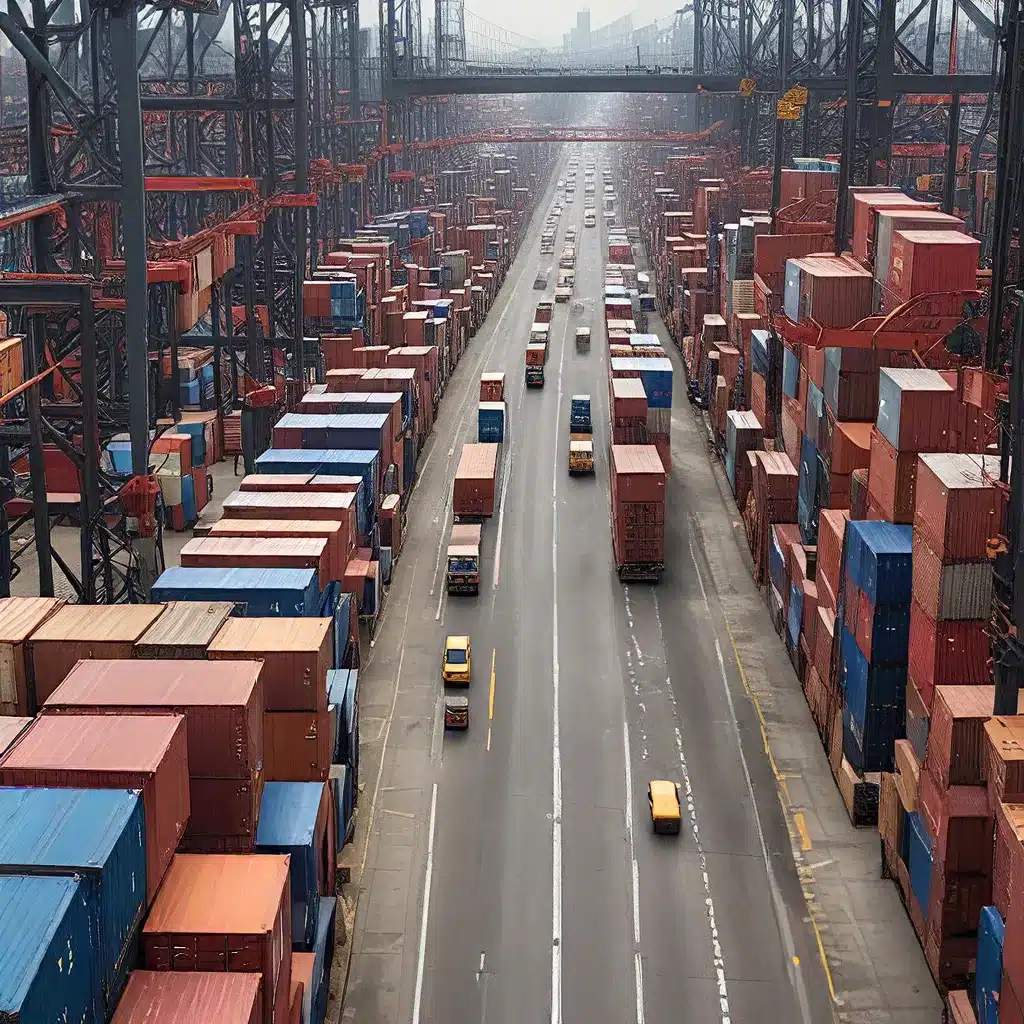
In today’s dynamic and interconnected business landscape, the logistics industry faces a myriad of challenges that hinder efficiency and drive up costs. Lack of real-time visibility into inventory levels, shipment locations, and asset utilization is a major pain point, while manual, paper-based processes make it difficult to track assets and obtain timely data on shipments. These inefficiencies create bottlenecks that reduce logistics productivity and undermine customer satisfaction.
The Transformative Power of IoT in Logistics
The Internet of Things (IoT) offers a compelling solution to these longstanding challenges. By integrating smart, connected devices into logistics processes, IoT can provide unprecedented visibility and tracking capabilities, enabling data-driven decision-making and optimization.
At the heart of IoT in logistics is the ability to collect and analyze real-time data from a network of sensors and devices. From GPS-enabled tracking of shipments to RFID-based inventory management, IoT technologies give logistics companies a granular view of their supply chain assets and operations. This increased visibility allows for dynamic route optimization, preventive maintenance, and the prevention of cargo spoilage through environmental monitoring.
Moreover, the data collected through IoT devices can be aggregated and analyzed using advanced analytics and machine learning algorithms. This empowers logistics managers to identify and resolve inefficiencies, boost asset utilization, and make informed, data-driven decisions. By streamlining yard management, optimizing warehouse operations, and enabling condition-based maintenance, IoT transforms logistics operations, reducing delays, shrinkage, and overall costs.
Transforming Supply Chain Visibility and Responsiveness
The real-time tracking and monitoring capabilities provided by IoT technologies are game-changers for the logistics industry. iBeacons and GPS tracking allow for precise location monitoring of assets, from pallets and containers to entire fleets of vehicles. This granular visibility ensures that logistics professionals can quickly locate, manage, and optimize the utilization of their valuable resources, minimizing losses, theft, and operational inefficiencies.
Sensor data on temperature, humidity, light, and pressure also plays a crucial role in ensuring the integrity of sensitive shipments. By integrating these sensors into logistics assets, companies can monitor environmental conditions throughout the transit process, proactively addressing any issues that may arise and preventing spoilage or damage.
Unlocking the Full Potential of IoT in Logistics
The transformative impact of IoT on logistics operations goes beyond just visibility and tracking. Fleet management software that gathers data from vehicles and drivers enables dynamic route optimization, fuel usage monitoring, and proactive maintenance, further enhancing efficiency and cost savings.
Additionally, warehouse management systems leveraging IoT technologies like smart shelves, robotic pickers, and scanners can automate inventory tracking and management, reducing errors and improving overall operational efficiency.
As IoT technologies continue to evolve, the logistics industry is poised for even greater transformations. Predictive analytics and machine learning models fed by the vast amounts of data collected through IoT devices will enable logistics companies to move from reactive to proactive supply chain management, anticipating and resolving issues before they occur.
Overcoming Challenges and Embracing the IoT Revolution
While the potential of IoT in logistics is immense, the adoption of these transformative technologies is not without its challenges. The upfront investment required for IoT integration, the need for specialized hardware and personnel training, and the operational costs associated with maintenance and energy consumption can present significant barriers for some logistics organizations.
However, the long-term benefits of IoT adoption far outweigh the initial hurdles. By embracing the power of real-time data, automation, and optimization, logistics companies can gain a competitive edge, reduce costs, improve efficiency, and enhance customer service – all of which are crucial in today’s fast-paced, customer-centric business environment.
The Future of Sensor-Driven Supply Chain Optimization
As the Internet of Things continues to transform the logistics industry, we can expect to see even more intelligent and automated supply chain operations. GPS tracking will become the standard for all vehicles, containers, and packages, enabling dynamic routing, better estimated times of arrival (ETAs), and proactive issue resolution.
Warehouses will become increasingly automated, with smart sensors, robotics, wearables, and automated storage and retrieval systems streamlining inventory management and order fulfillment. The massive amounts of data collected through IoT devices will feed into predictive analytics and machine learning models, allowing logistics companies to anticipate and mitigate potential disruptions before they occur.
Moreover, the emergence of IoT platforms and solutions will foster new business models for logistics companies, such as sensor-as-a-service and software-as-a-service offerings, opening up new revenue streams and value-added services.
Embracing the IoT Revolution in Logistics
The message for logistics companies is clear: IoT adoption is no longer an option, but a necessity for staying competitive. While the upfront investment may seem daunting, the long-term benefits will far outweigh the costs. By leveraging the power of real-time data, automation, and optimization, logistics companies can enhance visibility, improve efficiency, and deliver superior customer service – all of which are critical in today’s dynamic, customer-centric marketplace.
To get started with IoT in logistics, companies should begin by assessing their digital readiness, identifying the key people, skills, and tools required to support a successful implementation. They should also focus on consolidating and analyzing their existing data, breaking down silos, and fostering cross-functional collaboration to unlock the full potential of IoT-driven insights and solutions.
By embracing the sensor-driven supply chain optimization enabled by IoT, logistics companies can transform their operations, drive cost savings, and enhance their competitive positioning in the market. The future of logistics is undoubtedly interconnected, automated, and data-driven – and those who adapt to this reality will be poised for long-term success.